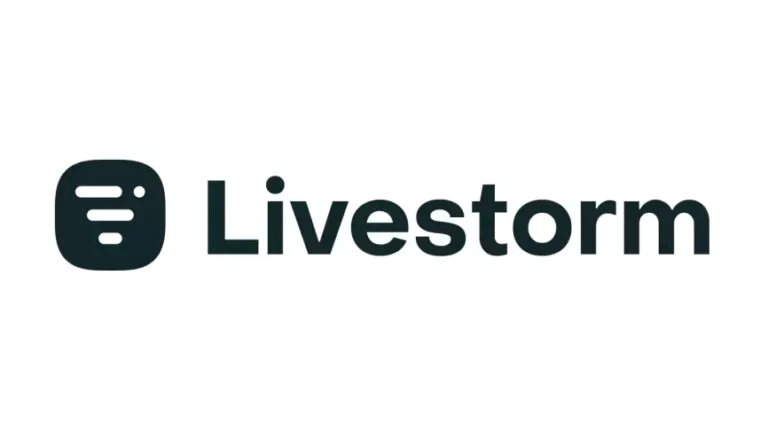Unlocking Hive: Your Ultimate Step-by-Step Blueprint for Success
In a fast-paced work environment, effective project management and team collaboration are essential for success. Hive is an innovative project management tool that simplifies these tasks by integrating task management, time tracking, and communication into one platform. This all-in-one solution helps teams stay organized, efficient and focused on achieving their goals.
Whether you are a freelancer handling multiple client projects or part of a large organization with complex workflows, Hive offers the features you need to streamline your work processes. This guide will walk you through the steps to set up Hive, use its various features, and make the most of it for your projects.
Process for Signup in Hive
Creating Your Account on Hive
The first step to using Hive is to create an account. Here’s how you can do it easily:
1. Visit the Hive Website: Open your web browser and go to hive.com to get started.
2. Click on Get Started: Look for the “Get Started” button, which is usually found at the top of the homepage. Click on it to begin the signup process.
3. Choose a Plan: Hive offers various subscription plans, including a free trial for new users. Take some time to review the options available and select the one that best suits your needs.
4. Fill out Your Information: Enter your email address and create a password for your account. If you prefer, you can also sign up using your Google account for a quicker registration process.
5. Confirm Your Email: After signing up, check your email inbox for a confirmation message from Hive. Click on the link provided in the email to verify your account.
By completing these steps, you will have access to Hive’s powerful features tailored for project management and collaboration.
Setting Up Your Workspace in Hive
Creating Your First Workspace
After signing up, the next step is to set up your workspace. This will be your central hub for managing all your projects and tasks.
1. Log in to Hive: Use your email and password to access your account.
2. Create a Workspace: Once logged in, look for the option to create a new workspace. Click on it and enter a name that reflects your team or project. Make sure the name is easily recognizable for all team members.
3. Invite Team Members: Collaboration is essential. Add team members by entering their email addresses. They will receive invitations to join your workspace, enhancing teamwork from the start.
Customizing Your Workspace in Hive
Customizing your workspace helps create a personal and familiar environment:
Add Company Branding: Upload your company logo and choose a color scheme that aligns with your brand. This makes the workspace feel more personalized and promotes a sense of belonging among team members.
Set up Projects: Within your workspace, create specific projects to keep everything organized. Click on the Projects tab, select Create Project, and name your project. You can also set a due date to help keep the project on track.
Understanding Hive’s Features
Key Features to Explore
Hive is packed with features designed to enhance productivity and collaboration. Here are some key features to explore:
1. Task Management: This is one of the most important features of Hive. You can create tasks, assign them to team members, set deadlines, and establish priorities. This ensures that everyone knows their responsibilities and timelines.
2. Time Tracking: Effective time management is essential for project success. Hive includes a time-tracking feature that allows team members to log hours spent on tasks. This information is useful for assessing productivity and estimating future projects.
3. Communication Tools: Clear communication is vital for teamwork. Hive offers built-in chat and commenting features, enabling team members to discuss tasks and projects without needing to switch to other platforms. This keeps all communication centralized.
4. Integrations: To streamline workflows, Hive integrates with popular tools like Slack, Google Drive, and Zoom. Connecting these tools allows for seamless communication and easy access to files and information.
Creating and Managing Tasks in Hive
How to Create Tasks in Hive
Creating and managing tasks in Hive is straightforward and efficient. Follow these steps:
1. Select Your Project: Navigate to the project where you want to add tasks. Click on the project name to open its details.
2. Click on Add Task: You will see an option to add a new task. Enter the task name and description. Be clear and specific about what needs to be done.
3. Assign Team Members: Choose a team member who will be responsible for the task. Assigning tasks helps define accountability and ensures everyone knows their role.
4. Set Deadlines: Specify a due date for each task to keep everyone on track. Setting realistic deadlines helps manage expectations.
5. Add Labels and Priority: Use labels to categorize tasks and set their priority (high, medium, low) to indicate urgency. This helps team members quickly identify which tasks need immediate attention.
Track Your Progress in the Hive
Monitoring task progress is crucial for successful project management.
Update Task Status: As work progresses, regularly update the status of tasks. You can mark tasks as in progress, completed, or stuck to keep everyone informed of the current state of work.
Use Comments: Encourage team members to add comments to tasks for questions, updates, or feedback. This keeps all relevant information in one place, improving communication and clarity.
Collaborating with Your Team with Hive
Effective Communication
To foster effective collaboration, leverage Hive’s communication features:
Use Chat: The chat feature allows for real-time communication with team members. Utilize this for quick discussions or to clarify details without needing to send multiple emails.
Set up Notifications: Enable notifications for task updates, comments, and mentions to stay informed. This way, team members won’t miss important information without constantly checking the platform.
Meetings and Collaboration
Schedule Meetings: Use Hive’s calendar feature to schedule team meetings. You can link these meetings to specific projects or tasks for context, ensuring everyone is prepared.
Share Files: Easily upload and attach files directly to tasks or projects. This ensures that all necessary documents are accessible to team members without having to search through emails.
Monitoring and Reporting Your Project with Hive
Using Dashboards
Dashboards provide a visual representation of project metrics and team performance:
Custom Dashboards: Create custom dashboards to visualize key metrics, such as task completion rates and project timelines. This helps you see an overview of multiple projects at a glance.
Track Performance: Use reports to analyze team performance, track task completion rates, and identify areas for improvement. Regular analysis helps you adjust strategies as needed.
Adjusting Strategies
Regularly monitor your dashboards and reports to ensure your projects are on track:
Evaluate Progress: Assess whether your team is meeting deadlines and project goals. If you notice delays or issues, investigate the causes and make necessary adjustments to timelines or resources.
Solicit Feedback: Encourage team members to provide feedback on processes and workflows. Understanding their challenges can help you improve overall efficiency.
Exploring the Advanced Features of Hive
Automation
Automation features can save time and reduce manual effort:
Automate Repetitive Tasks: Use Hive’s automation features to set up recurring tasks or reminders. For example, if you have a weekly report to submit, automate its creation and assignment to streamline the process.
Custom Integrations
If you have specific needs, consider custom integrations:
APIs and Webhooks: Explore Hive’s API to create custom integrations that suit your workflow. This flexibility allows you to connect Hive with other tools your team uses for a seamless experience.
Tips for Maximizing Hive’s Potential
To fully leverage Hive, consider these best practices:
Regular Training and Updates
Conduct Training Sessions: Organize regular training sessions for your team to familiarize them with Hive’s features. This ensures everyone is comfortable using the platform effectively.
Stay Updated: Keep an eye on Hive’s updates and new features. The platform regularly enhances its functionality based on user feedback, so being aware of these changes is beneficial.
Foster a Culture of Collaboration
Encourage Communication: Promote open communication among team members. This can lead to better problem-solving and innovative ideas.
Celebrate Successes: Acknowledge and celebrate team achievements. Recognizing hard work fosters motivation and creates a positive team environment.
Continuous Improvement
Gather Feedback: Regularly ask team members for feedback about their experiences with Hive. Use this information to make improvements and adjustments to your processes.
Analyze Data: Use Hive’s reporting features to analyze data frequently. Identify patterns and areas for improvement to ensure your team continues to evolve and adapt.
Conclusion of Article
Getting started with Hive can significantly enhance your team’s collaboration and project management capabilities. By following this step-by-step guide, you can effectively set up your account, customize your workspace, and utilize Hive’s powerful features to streamline your workflow.
From task management to communication tools, Hive provides the resources necessary for successful project execution. Embrace the platform, explore its capabilities, and adapt it to your unique team dynamics. With Hive, your projects can run more smoothly, allowing you to focus on what truly matters achieving your goals.
Final Thoughts on Hive
In the competitive landscape of project management, leveraging tools like Hive can make a significant difference in your team’s productivity and success. Take the time to explore all its features and integrate them into your daily workflows. With the right approach, Hive






